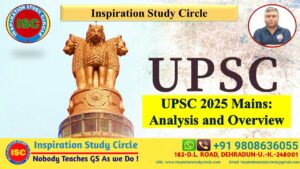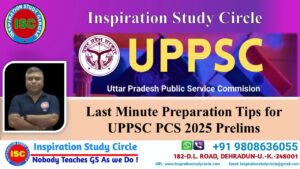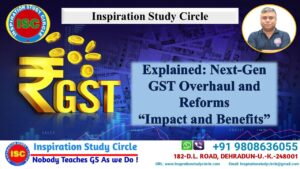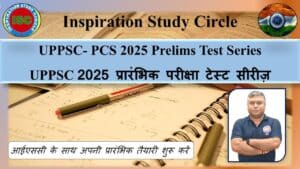
UPSC Mains 2025 Analysis and Overview
UPSC Mains 2025 Analysis and Overview Table of Contents The UPSC Mains 2025 analysis indicated a paper that was a balance of static and analytical questions,

The Union Public Service Commission (UPSC) conducted the Civil Services Prelims exam for 2025 on Sunday (May 25). It was held in two shifts — morning and afternoon. While the morning shift for GS paper 1 started at 9:30 am, the afternoon shift for GS paper 2 (CSAT) began at 2:30 pm.
Candidates were needed to carry their admit card to the examination center, and a valid ID card (Aadhar/PAN card) with the candidate’s photograph on it.
The exam is held in three stages — prelims, mains, and the personality test to select officers for the Indian Administrative Service (IAS), Indian Foreign Service (IFS) Indian Police Service (IPS), and other Grade A and B posts in the central government and its departments.
UPSC CSE preliminary exam consists of objective-type questions. Candidates scoring above the cut-off marks will become eligible to register for the UPSC IAS Main examination. UPSC CSE Main will be descriptive followed by an interview round for candidates for the various services and posts.
In the words of candidates and experts, the question paper was critically and visibly balanced and moderate. It followed last year’s pattern with a twist of bringing back the old and contemporary UPSC style. CSAT did make the highlight of the day with slightly more analogies than figures, but the wholesome experience and reaction to the question papers for both GS I and GS II was exhaustive and worrisome. In the outline, the paper was very lengthy and focused on the new breed of future bureaucrats who are well-versed with current events and straddle both the present and future of India.
The candidates should expect the result of the UPSC CSE Prelims 2025 to be out soon on the official website of UPSC.
The cutoff is expected to be somewhere less than last year but more than the years before it. Since the paper was moderately difficult in all aspects, the cutoff can reach a comfortable bracket of 80 to 85 for the General category, thereby following along the same lines for the further categories.
Disclaimer: The Above article is based on the opinions and views of various candidates and experts from our institute. For the latest and most accurate information and notifications, visit the official website of UPSC regularly.

UPSC Mains 2025 Analysis and Overview Table of Contents The UPSC Mains 2025 analysis indicated a paper that was a balance of static and analytical questions,

Last Minute Preparation Tips for UP PCS Prelims 2025 Table of Contents The Uttar Pradesh Public Service Commission conducts a series of annual examinations for

Explained: Next-Gen GST Overhaul and Reforms Table of Contents The GST Council in its 56th meeting on 3rd September, 2025, made the recommendations relating to changes in

Explained: Vikram-32 Chip Table of Contents Union Information and Broadcasting Minister Ashwini Vaishnaw recently unveiled India’s first indigenously developed 32-bit processor called VIKRAM-32. The minister presented the

UPSC Prelims 2026 Test Series Table of Contents Inspiration Study CircleUPSC Prelims 2026 Test Series The Union Public Service Commission (UPSC) is set to conduct

UPPSC- PCS 2025 Prelims Test Series UPPSC 2025 प्रारंभिक परीक्षा टेस्ट सीरीज़ उत्तर प्रदेश लोक सिविल सेवा 12 अक्टूबर 2025 को अपनी उच्च और संयुक्त